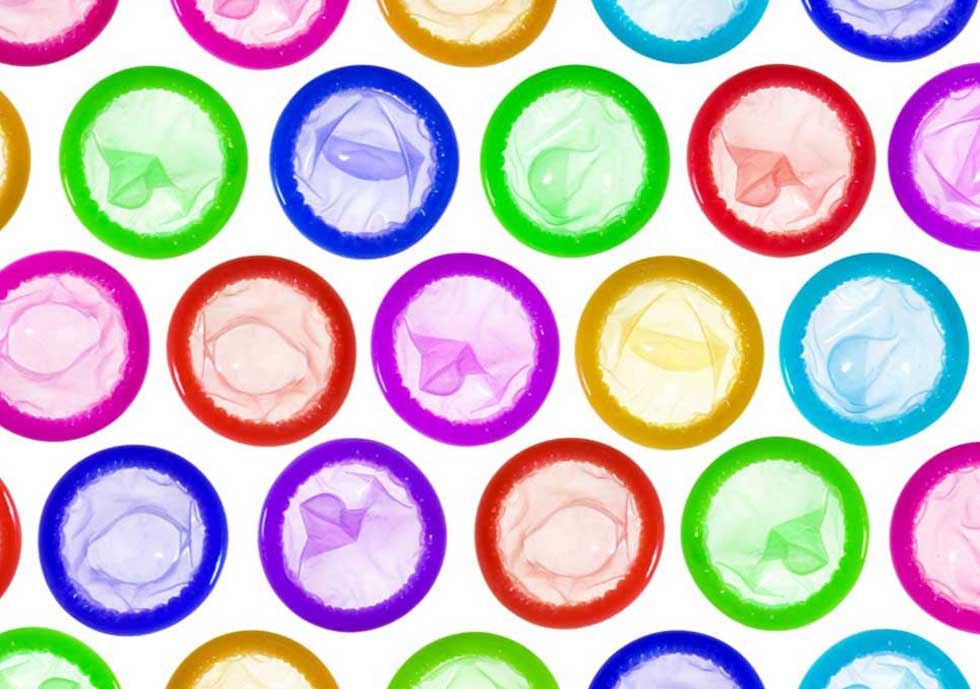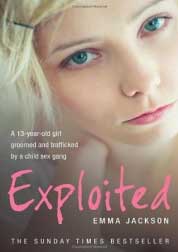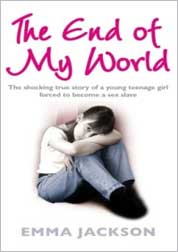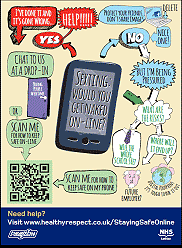Darker Shades of Pleasure
Sexual Exploitation | Child Sexual Exploitation
| Child Sexual Exploitation Defined | CSE Resources | Pornography | Sexualisation | Grooming | Sexting | Sexual Coercion | Human Trafficking | Social Media | Useful websites
We are including ‘Darker shades of pleasure’ in our Awareness Week resource pack because the issues described below feature regularly in the media and are having a significant negative impact on people’s sexual health and well being. The Family Planning Association (FPA) states that ‘sexual behaviour should never result in exploitation, oppression or physical, emotional or psychological harm. Everyone has a responsibility to ensure that the sexual activity they engage in is freely and fully consensual. Everybody has a responsibility to ensure that their activities do not harm someone else.’ (2011). If people know that sex should be fun, pleasurable and consensual then they are more likely to report abuse.
The Sexual Offences (Scotland) Act was updated in 2009 to keep everyone safe - especially young people and other vulnerable groups. Everyone has the right to be safe in their relationships and free from physical or verbal violence or intimidation. In Scotland, the age of consent is 16 for sexual intercourse between males and females whether straight or gay. The term 'age of consent' means the age at which a person is legally allowed to decide to have sex.
Sexual Exploitation
Sexual exploitation can be an issue in its own right but can also be an umbrella term that includes issues such as child sexual exploitation, pornography, sexualisation, grooming, sexting, sexual coercion and human trafficking - issues which rarely sit in isolation and are multi faceted. Sexual exploitation can be viewed as the consequence at the extreme end of the sexualisation spectrum.
Sexual exploitation can take many forms varying from a consensual relationship where sex is exchanged for things like affection, food, accommodation, money, cigarettes or gifts, to serious organised crimes including human trafficking.
Exploitation can also occur without physical contact when children are persuaded or forced to post indecent images of themselves online, participate in non-contact sexual activities via a webcam or smartphone, or engage in sexual conversations on a mobile phone (DfE, 2011). For young people under 18, sexual exploitation is a form of child abuse.
Child Sexual Exploitation
Child sexual exploitation (CSE) is an illegal activity by people who have power over children and use it to sexually abuse them. The children receive something in exchange for their participation in sexual activity. Perpetrators of sexual exploitation are found in all parts of the country and are not restricted to particular ethnic groups. CSE is a form of abuse and is now a major child protection issue for all communities across the UK. It is often hidden from view and goes unnoticed. Vulnerable young girls and boys are groomed and then abused, leaving them traumatised and scarred for life. The ‘victims’ may not even realise that they are being sexually exploited.
Child Sexual Exploitation Defined
“the sexual exploitation of children and young people under 18 involves exploitative situations, contexts and relationships where young people (or a third person or persons) receive something (e.g. food, accommodation, drugs, alcohol, cigarettes, affections, gifts, money) as a result of them performing, and/or another or others performing on them, sexual activities. Child sexual exploitation can occur through the use of technology without the child’s immediate recognition; for example being persuaded to post sexual images on the internet/mobile phones without immediate payment or gain. In all cases those exploiting the child/young person have power over them by virtue of their age, gender, intellect, physical strength and/or economic or other resources.
Violence, coercion and intimidation are common, involvement in exploitative relationships being characterised in the main by the child’s or young person’s limited availability of choice resulting from their social/economic and/or emotional vulnerability.”
- Department for Children Schools and Families 2009
The Office of the Children’s Commissioner for England has undertaken a comprehensive two year Inquiry into the nature and extent of child sexual exploitation (CSE) in England. The following Reports have been published and will give a deeper insight to the nature and extent of CSE.
Download publications:
- ‘I thought I was the only one. The only one in the World’ - (2012) The Office of the Children’s Commissioner’s Inquiry into Child Sexual Exploitation in Gangs and Groups Interim Report.
- “Sex without consent, I suppose that is rape” - (2013) How young people in England understand sexual consent.
- “It’s wrong but you get used to it”: - (2013) A qualitative study of gang-associated sexual violence towards, and exploitation of, young people in England
- “If only someone had listened”: - (2013) The Office of the Children’s Commissioner’s Inquiry into Sexual Exploitation in Gangs and Groups; Final Report.
- Scotland’s National Action Plan to tackle Child Sexual Exploitation
- Lessons for Scotland from Jay Report into Child Sexual Exploitation in Rotherham
- ‘Real Voices’ Report of Child sexual Exploitation in Manchester
Two recommended novels, both real experiences, which explore CSE:
'If you read the papers, you'd think that the only girls to get hooked are from dysfunctional families. But what happened to me could happen to anyone. Your child, your sister, your friend - even yourself if you are young and naive enough, like I was'
Emma was just 13 when her happy childhood came crashing down. A nice girl from a good home, she had no idea the young lads she and her friends met every Saturday in the shopping mall weren't all they seemed. The boys were part of an organised child sexual exploitation gang targeting innocent young girls, grooming them for prostitution. Captivated by the ring leader, and the alcohol and drugs he freely handed round, Emma didn't see the first brutal rape coming. From that moment, her life was never her own.
Emma found herself drawn into a trap of degradation and violence, frightened for her life and not knowing where to turn. But Exploited is also the story of how she found the courage and inner strength to risk everything, and escape.
Emma talks candidly about how she was groomed – and how she is trying to help the growing number of others being picked out for a similar fate.
CSE Resources
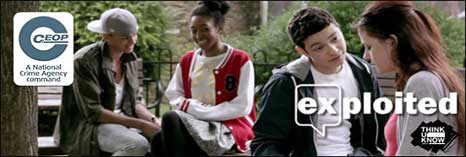 Exploited is the latest education resource from CEOP’s Thinkuknow programme and is based around an 18-minute film which helps young people learn to stay safe from sexual exploitation by recognising the signs. The resource is founded on a set of learning points promoting awareness and positive behaviours. Exploited
Exploited is the latest education resource from CEOP’s Thinkuknow programme and is based around an 18-minute film which helps young people learn to stay safe from sexual exploitation by recognising the signs. The resource is founded on a set of learning points promoting awareness and positive behaviours. Exploited
Websites for further information on CSE:
- CEOP works across the UK and maximises international links to tackle child sex abuse; includes information and advice for parents, news, and a facility to report abuse. www.ceop.police.uk
- PACE (Parents Against Child Sexual Exploitation) offers help, information and advice for families affected by CSE. www.paceuk.info
- NSPCC Information for Professionals on CSE
www.nspcc.org.uk - Barnardos works with children who have been victims of CSE
www.barnardos.org.uk - Stop CSE - A network of professionals working together to tackle child sexual exploitation
www.stop-cse.org
Pornography
Pornography can be defined as writings, films or pictures designed to stimulate sexual excitement. Pornography can range from ‘mild’ sexual images to images involving children and animals (this is abuse). Pornography has always been available, however with the rise of electronic communication such as the internet, mobile phones, DVDs and social networking, accessing and sharing it has never been easier. Young people appear to be increasingly accessing pornography; as they become sexually aware they may begin to seek further information and often where this is not provided in an appropriate way (i.e. through the curriculum or from parents/carers), pornography can be utilised to fill in the voids. These young people will have unrealistic expectations of sex and relationships and may engage in unwanted sexual practices to conform. Anecdotal evidence is telling us that pornography is having a negative impact on young people’s sexual health, wellbeing, self-esteem, body image and relationships.
Websites for more information on pornography:
- The Dumfries and Galloway Domestic Abuse and Violence Against Women Partnership has created a Pornography awareness web page - www.dumgal.gov.uk/davawp/index.aspx?articleid=12723
- Basically... Porn is everywhere - A Rapid Evidence Assessment of the effects that access and exposure to pornography have on children and young people - Porn is everywhere
- Information from the Women’s Support Project, a Glasgow based Scottish Charity: Commercial sexual exploitation
- Watch the short film, Pleasure Vs Profit: Pleasure Vs Profit
- ‘He’s the Stud and She’s the Slut’. Young People’s attitudes to pornography, sex and relationships
Sexualisation
"How have sex, sexiness and sexualisation gained such favour in recent years to be the measure by which a women’s and girl’s worth is judged? While it is not a new phenomenon by any means, there is something different about the way it occurs today and how it impacts on younger and younger girls."
- Papdopoulas 2010
Sexualisation can be viewed as the imposition of adult sexuality onto young people and children before they are physically, mentally or emotionally ready. The world has always known images and sexualised images have appeared in commercialisation since mass media emerged. However, there seems to be more today than there has ever been and each image has a ‘message’ for somebody about such things as values, expectations and body image. Women and men are stereotyped and valued for their physical attributes while girls and boys seem to be under pressure to be gender stereotyped from a younger and younger age. Young people are being exposed to an increasing amount of sexualised images from a phenomenal range of sources. Far more than they ever have been in the past.
The advertising and marketing in female/children’s magazines are geared to make yourself desirable to the opposite sex and in male magazines the majority of marketing/adverting features highly sexualised images women. Even children’s magazines do not escape from this e.g. Bratz Dolls and even 'Dora the Explorer' has had a make over. Playboy bedding, school stationary, padded bras, high heeled shoes are all marketed at young children. Girls may seem be exposed to the impact of this but boys are not immune to it and messages are sent out them to be masculine and not show emotions.
For more information on sexualisation:
Read Dr Linda Papadopoulos (Feb 2010)
'Sexualisation of young people – a review'
Crown Copyright
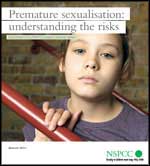 Premature sexualisation: understanding the risks: outcomes of the NSPCC’s expert seminar series (PDF, 374KB) a summary of expert opinion on the sexualisation of children.
Premature sexualisation: understanding the risks: outcomes of the NSPCC’s expert seminar series (PDF, 374KB) a summary of expert opinion on the sexualisation of children.
 SEXT UP KIDS
SEXT UP KIDS
How Children are Becoming Hypersexualized
Serves as an engaging and thought-provoking entrance into a conversation about the sexualisation of youth for educators, students, and parents... The diversity of visual examples provided from current popular culture makes the film particularly relevant and memorable, and the inclusion of the teen voice provides authenticity and offers a glimpse of the lived experiences of adolescents."
- Journal of Children and Media
The DVD is available to borrow and DAVAWP would be happy to assist at any screening: Contact Luis Pombo for more details. [email protected]
Grooming
This is the ‘behaviour’ used by predators to prepare people, particularly young people, for sexual exploitation. The number of incidents being reported to the Police has grown in the last year. Grooming can be subtle, drawn out, controlling, calculated and pre-meditated and often very difficult to recognise. Online grooming can be more rapid. It is vital that predators have access to people, particularly young people, so will frequent locations where there is little or no adult supervision.
More information:
- PACE - The grooming process
- NSPCC - Understanding_the grooming_& entrapment_process
- Education Pack on ‘Grooming’
- Eastenders – Whitney’s story which can be used in training
Sexting
Sexting is sending sexually explicit messages including images via mobile phone, email, social networking sites and web chat. Sexually explicit pictures can be considered pornography. It is more than "I will show you mine if you show me yours". The images may be taken when the victim has not consented and images may be shared. This is a growing issue and often young people do not realise how vulnerable they are making themselves and are open to blackmail, humiliation and embarrassment. Once these images are in cyberspace they can never be erased and can be transmitted around the world in a very short time.
Healthy Respect, part of NHS Lothian, has developed a campaign which has a focus on sexting, online safety linked to sexual health and respectful relationships free from coercion and pressure. Materials include an educators guide, posters, leaflets, information on how technologies are used to bully or coerce, a list of useful resources, information and sources of support, and useful tips. New content has been developed for a website with sections on Staying safe online, Sexting, Pornography, Pressure to have sex, Cyber Sex and Bullying.
More information:
You can find out more and download the resources here.
 Child Line has launched its first app 'Zipit' to defuse the pressures of sending self-generated explicit images or videos. Labelled as 'sexting', the sharing of self-generated sexually explicit images or videos by mobile phone or online is now commonplace amongst young people to the point that it is considered mundane. The app has been developed in response to a Child Line survey of 13-18 year olds which revealed that 60% young people are frequently taking huge risks by making and sending sexual images of themselves. The free app offers witty images to send instead of explicit ones, advice for how to engage in safe chat, what to do if you feel threatened or if an image becomes public, and a direct link to call Child Line. For more information on Zipit: Click here.
Child Line has launched its first app 'Zipit' to defuse the pressures of sending self-generated explicit images or videos. Labelled as 'sexting', the sharing of self-generated sexually explicit images or videos by mobile phone or online is now commonplace amongst young people to the point that it is considered mundane. The app has been developed in response to a Child Line survey of 13-18 year olds which revealed that 60% young people are frequently taking huge risks by making and sending sexual images of themselves. The free app offers witty images to send instead of explicit ones, advice for how to engage in safe chat, what to do if you feel threatened or if an image becomes public, and a direct link to call Child Line. For more information on Zipit: Click here.
As the NSPCC and TV programme 'Hollyoaks' start a new campaign on the issue of sexting, this could be the opportunity for your youth work setting to get ready to embrace the learning opportunities this brings.
To that end, Youth Link Scotland has produced a paper and reflective questions to assist youth workers to tackle the topic. Download the Youth Link paper
For more information on sexting:
NSPCC Resource: children, young people and sexting
Sexual Coercion
- Do you feel you are / have been under pressure to agree to have sex or to do something sexual?
- Have you been asked to have sex in ways you’re not 100% comfortable / happy with?
- Do you feel that at times you can’t say no because you’ve already had sex?
- Do you feel that you can’t say no to unprotected sex or is someone pressuring you to have unprotected sex?
- Have you been given lots of alcohol “to get tipsy” and then asked to have sex?
- Have you been told any of the following?
- Come on! …It’s time… Everyone’s doing it!
- …I need to have sex with you to know that you really love me…
- …What’s the problem…we’ve already done it…
- …I’ll tell everyone you’re frigid…
- …If you don’t have sex with me, I’ll have to leave you…
- …I’ll have to get it somewhere else…
- Do you feel / have you felt threatened in any way to agree to have sex?
Sexual coercion happens when someone is put under pressure to agree to have sex.
This pressure is not always obvious, sometimes it can be subtle and can take many different forms:
- Constantly asking you for sex
- Trying to convince you to a point that you feel worn out or you feel it would be easier just to say yes
- Making promises in order to get sex from you e.g. “This is not a one-night-stand; I promise…”
- Touching you sexually (when you don’t want to)
- Lying:
- Saying they are the same age as you or younger/older than they actually are
- Saying they love you and that’s why they need to have sex with you
- Putting emotional pressure on you
- Telling you that everybody is doing it and it’s weird that you don’t want to
- Complaining that you don’t love them because you don’t want to do it
- Telling you it is your duty to have sex with them
- Making you feel guilty for not doing it
- Accusing you of having an affair to manipulate you into having sex
- Arguing about not having sex
- Using alcohol or drugs to encourage you to have sex
- Blackmailing you
- Using threats
- Telling you they would go elsewhere for sex
- Telling you they’ll end the relationship if you don’t have sex with them
When we look at these behaviours as part of a bigger picture, they are not part of a healthy relationship; what is more, they can affect your physical, sexual and mental health and even your future relationships.
If you feel you’re experiencing sexual coercion, there are a number of organisations that are willing to listen to you and to help you.
| For more information, advice and support please contact: | |
| Sexual Health D&G – NHS Dumfries & Galloway: |
0345 702 3687 |
| Women’s Aid: - Dumfriesshire and Stewartry: - Wigtownshire: |
01387 263 052 (24Hr) 01776 703 104 (24Hr) |
| South West Rape Crisis and Sexual Abuse Centre: | 01387 253 113 or 01776 889 331 (9am to 9pm) |
| Police | 101 |
Human Trafficking
Human Trafficking is a form of modern day slavery and is a serious crime. It is when people are taken from their communities and brought to (or moved around) a country by others by force, fraud or coercion. Not all victims are illegal immigrants; some can be from EU countries or can be victims of internal trafficking within the UK. The Department of Health has launched a toolkit to help identify and support victims of human trafficking in an appropriate and safe manner.
The toolkit has two elements, a guidance leaflet that can be printed out from the website and an e-learning module. Those within the NHS will be able to gain access and accreditation through their NHS login. The module is also available as an open access module so anyone can complete it, although this will not be accredited.
Social Media
Whether we like it or not, the Internet, social media, and all of the related technology is the furute of communication and is here to stay. This new form of media makes the transfer of text, photos, audio, video, and information in general increasingly fluid among internet users. Platforms like twitter, Facebook, and Linkedin have created online communities where people can share as much or as little personal information as they desire with other members.
The result is an enormous amount of information that can be easily shared, searched, promoted, disputed, and created. As evidenced every day in so many ways, this new technological landscape brings many wonderful benefits to our family’s lives and relationships. At the same time, as with any new innovations, this impact has a dark side which is having an impact on the darker shades of pleasure mentioned above in this paper.
For more Information on social media:
- The Bad, the Ugly, and the Good of Kids' Use of Social Media - By Jim Taylor, Ph.D. on May 28, 2013
- www.pinkheartstring.com - Kids on Social Media: Pros, Cons and What Parents Should Do
- Social Media Summary - PDF file 63Kb
Useful websites for all ‘Darker Shades of Pleasure’
- http://www.nspcc.org.uk
- http://www.childline.org.uk/Pages/Home.aspx
- Child Exploitation & Online protection Centre- Internet safety - http://www.ceop.police.uk
- http://www.thinkuknow.co.uk
- http://www.wecanstopit.co.uk
- http://www.womenssupportproject.co.uk
- UK Human Trafficking Centre: latest Report
- The NSPCC National Child Trafficking Advice and Information Line
